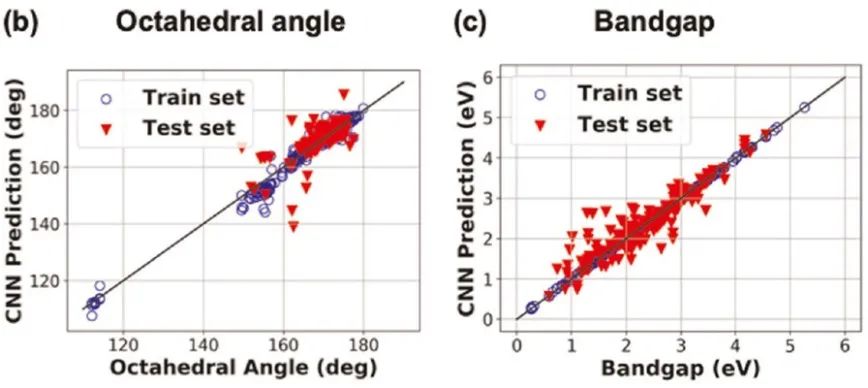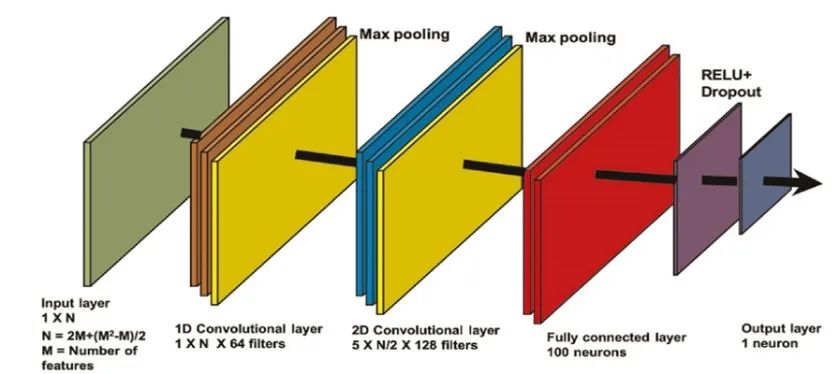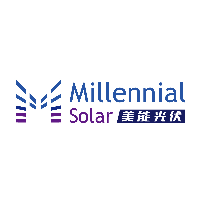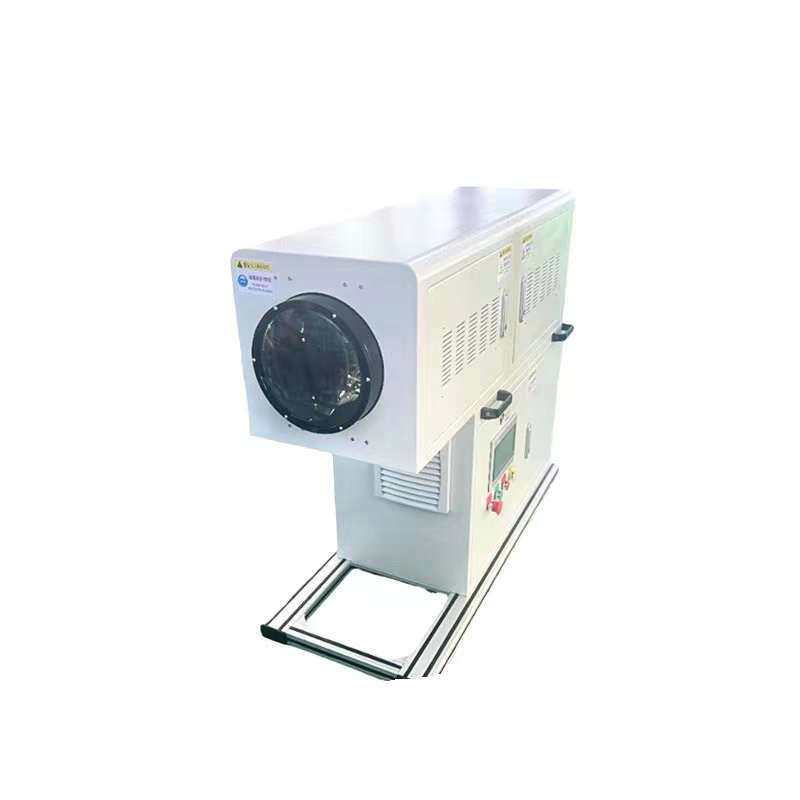實現商業上可行的太陽能電力對于確保長期經濟增長和減輕氣候變化的影響至關重要。金屬鹵化物鈣鈦礦(MHP),尤其MAPbI3 (MA=CH3NH3),是目前研究最多的太陽能電池材料,其功率轉換效率(PCE)約為25.2%,超過了目前商業化的太陽能電池,如多晶硅(c-Si,21.3%)、碲化鎘(CdTe,22.1%)和銅銦鎵硒(CIGS,22.3%)。但是,與傳統的太陽能電池材料相比,MHP的主要優點是它們易于大規模合成且成本相對較低。此外,其在可見光區域的吸收系數》3.0×104cm?1 、激子結合能低所導致的自由電子和空穴量子產率高、長的電子-空穴擴散長度、電子良性點和晶界缺陷。MHP是串聯太陽能電池,能將寬帶隙的“頂部電池”與窄帶隙材料(如硅)耦合為“底部電池”。鑒于晶體硅具有1.1 eV的帶隙,需要具有1.75 eV帶隙的材料才能使兩個結的電流匹配。當前的研究重點是探尋成本低廉、穩定且無鉛的MHPs單個吸收器或串聯太陽能電池最佳材料,但材料設計的化學空間仍然過于寬泛,需更有效的搜索方法來尋找不同帶隙范圍的鈣鈦礦結構。
美國匹茲堡大學機械工程與材料科學系的Wissam A. Saidi教授等,系統地開發了一個包含862個MHP結構和帶隙特性的數據集,目的是開發一個預測性ML模型,以捕獲該化學空間的復雜趨勢和相關性。他們主要通過關注有機分子的變化來構建材料設計空間,與無機體系相比,有機分子的結構具有極大數量的可能性。作者為MHP開發了一種ML方法,該方法將:
使用易于計算的描述符準確估算帶隙;
克服目標值分布不平衡的小型數據集問題,即目標值的某些范圍部分可能樣本太多,而其他部分可能樣本太少或沒有;
使用簡單的ML方法,這些方法在計算上并不苛求,并且相對容易理解和控制。
以此ML方法研究表明,由相對較小的神經網絡元素組成的分層神經網絡體系結構,可以解決所有這些約束。在這種情況下,ML元素的排列方式應使每個部分在預測過程中發揮特定的作用。每個元素都是使用卷積神經網絡(CNN)框架構建的,并且除了其他元素之外,還針對其預設作用進行了獨立訓練。這樣簡化了神經網絡的學習過程,也避免了對具有諸多隱藏層的更復雜的網絡體系結構的需求。

Machine-learning structural and electronic properties of metal halide perovskites using a hierarchical convolutional neural network
Wissam A. Saidi, Waseem Shadid & Ivano E. Castelli
The development of statistical tools based on machine learning (ML) and deep networks is actively sought for materials design problems. While structure-property relationships can be accurately determined using quantum mechanical methods, these first-principles calculations are computationally demanding, limiting their use in screening a large set of candidate structures. Herein, we use convolutional neural networks to develop a predictive model for the electronic properties of metal halide perovskites (MHPs) that have a billions-range materials design space. We show that a well-designed hierarchical ML approach has a higher fidelity in predicting properties of the MHPs compared to straight-forward methods. In this architecture, each neural network element has a designated role in the estimation process from predicting complex features of the perovskites such as lattice constant and octahedral till angle to narrowing down possible ranges for the values of interest. Using the hierarchical ML scheme, the obtained root-mean-square errors for the lattice constants, octahedral angle and bandgap for the MHPs are 0.01??, 5°, and 0.02?eV, respectively. Our study underscores the importance of a careful network design and a hierarchical approach to alleviate issues associated with imbalanced dataset distributions, which is invariably common in materials datasets.

責任編輯:pj
-
太陽能電池
+關注
關注
22文章
1200瀏覽量
69634 -
多晶硅
+關注
關注
3文章
243瀏覽量
29415 -
神經網絡
+關注
關注
42文章
4787瀏覽量
101337
發布評論請先 登錄
相關推薦
邁向27.51%效率,非晶/微晶材料在HBC太陽能電池中的應用

高效太陽能電池:HPBC、TBC與HBC,三種不同BC電池結構對比

抗反射涂層對太陽能電池性能的影響

利用太陽光模擬器進行鈣鈦礦太陽能電池的I-V測試

太陽能電池片的制造工藝原理和注意事項?
淺談太陽能電池的類型

太陽能電池板有輻射嗎
高效介孔鈣鈦礦太陽能電池的電子注入和缺陷鈍化!

鈣鈦礦太陽能電池產線工藝環節介紹





 太陽能電池材料的不同結構
太陽能電池材料的不同結構












評論